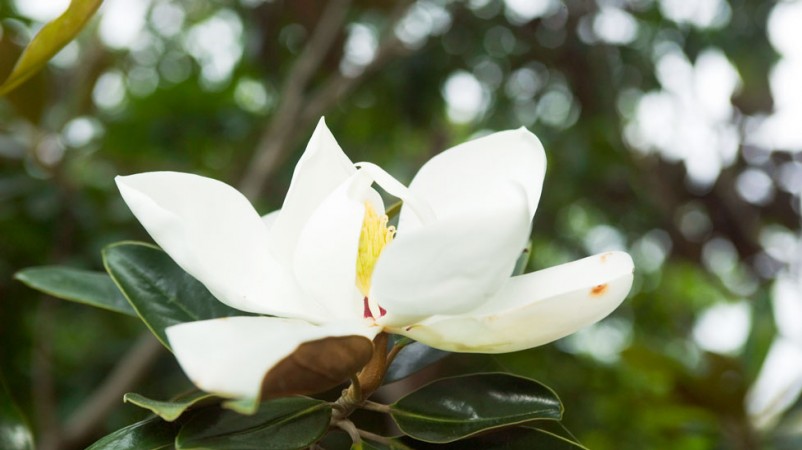Don looked at a new dwarf variety of the evergreen or Bull Bay magnolia (Magnolia grandiflora). ‘Little Gem’ was developed by Warren Steed of Steed’s Nursery in North Carolina in the U.S.A. It has many of the attributes of its parent, including large white fragrant flowers, but it is a smaller, more compact plant.
Like the evergreen magnolia, the underside of each leaf on ‘Little Gem’ is a rich, reddish-brown. When you look up at mature trees the undersides of the leaves are clearly visible, and you can sometimes achieve charming effects by coordinating those colours with other things in the garden. The fence behind the dwarf magnolias shown in our segment has been painted a reddish brown colour, which matches the rusty reverse of the magnolia leaves.
Plant details
Common name: Dwarf magnolia
Botanic name: Magnolia grandiflora ‘Little Gem’
Description: Dwarf variety of the evergreen magnolia (Magnolia grandiflora), but only a quarter of its size. ‘Little Gem’ will reach approximately 4m (12′) in height and 2.5m (8′) in width. It has a dense growth habit, glossy leaves with a rusty reverse, and creamy white, perfumed flowers in spring and summer.
Best climate: ‘Little Gem’ will grow well in most parts of Australia from Rockhampton in Queensland, around the southern coast to Geraldton in Western Australia. It is frost tolerant once established.
Best look:
specimen plant in lawns, garden beds or parks hedge large decorative patio pots
Good points:
large white perfumed flowers shiny green leaves with a rust coloured reverse compact growth habit
Downside:
None to speak of – ‘Little Gem’ is relatively insect and disease free.
Care:
‘Little Gem’ needs a well-drained soil and a position in full sun or part shade. Mulch to keep the roots cool and moist, and give an occasional deep soaking in prolonged dry periods. Remove seed heads after flowering to encourage new growth and more flowers.
Getting started:
Available in Victoria, New South Wales, southern Queensland and Tasmania, but may be hard to find in other areas. Expect to pay from $25-$40 for plants in 200mm (8″) pots.



